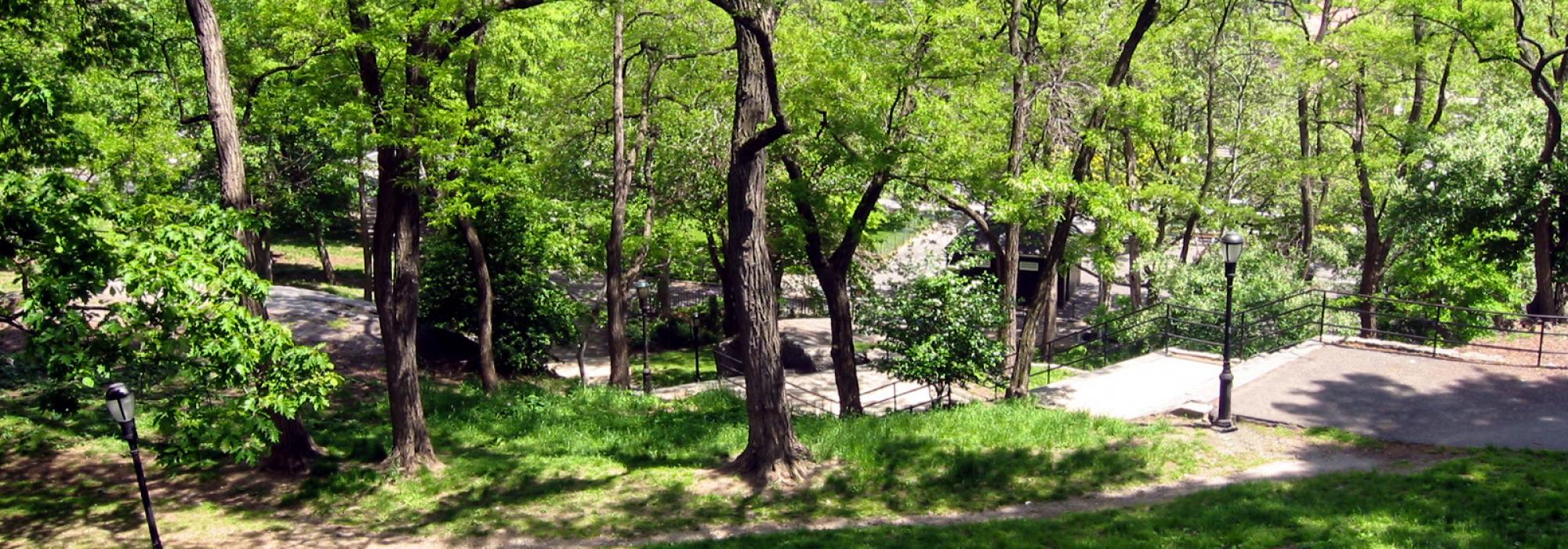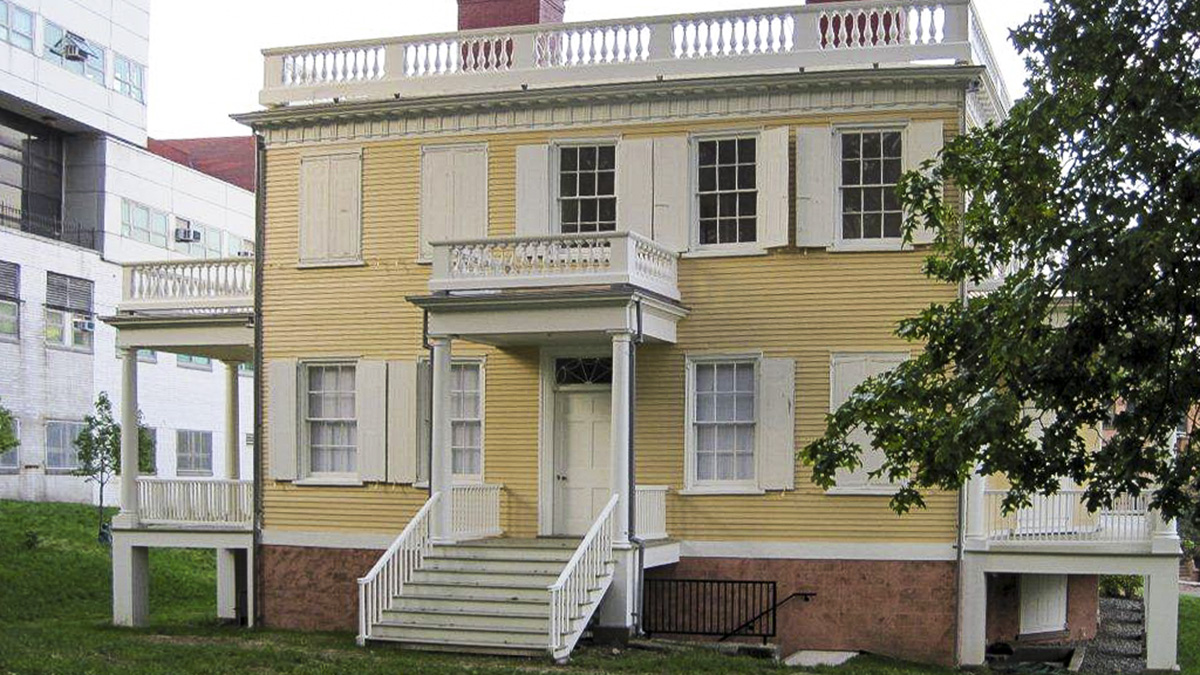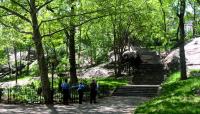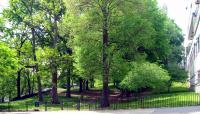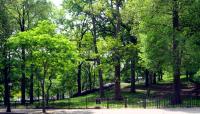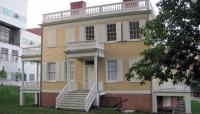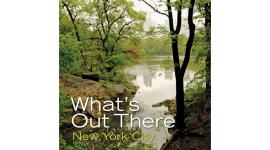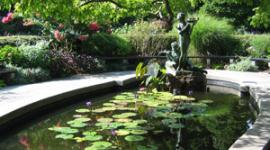Landscape Information
Situated on land purchased by Alexander Hamilton as a country retreat in 1800, the Grange was built in the 1801-1802 period as Hamilton's 32-acre country estate and was named after the ancestral seat of Alexander Hamilton's Grandfather, Laird of the Grange, Ayshire, Scotland. The architect of the Grange was John McComb, Jr., who also designed City Hall. Alexander Hamilton enjoyed the Grange for only two years, as he was cut down in a tragic duel with Aaron Burr on July 11, 1804. The Grange remained in the possession of Hamilton's widow for another thirty years. The Grange has been twice moved from its original Harlem location in 1889 and 2008. The present site sits on 1.1 acres of former open space in the northwest corner of St. Nicholas Park within the historic bounds of the former Hamilton estate landscape. The park, built around a large outcropping of Manhattan schist bedrock, was designed by Samuel Parsons, Jr., in 1906 during his tenure with the New York City Department of Parks. The linear park embraces the site’s natural topography and extends along the west side of St. Nicholas Ave between 128th and 141st Streets. The original site of the Grange was wooded with two streams running through it, offering views of the Hudson, Harlem, and East Rivers, and included thirteen gum trees representing the colonies, gifted by Washington and planted in a circular pattern. The new location was chosen to reinterpret Hamilton Grange’s bucolic, countryside setting on a high bluff overlooking the Harlem plain. The moving of the house required the removal and transplant of approximately 25 trees, the planting of at least thirteen new trees, the installation of a storm retention basin, fencing, a stone wall, paths, and lighting. Newly-landscaped areas, featuring indigenous plants once found on Hamilton’s property, are today watered by redirected runoff. The house, reopened in 2011, was oriented to face East 141st Street, providing street access and physical engagement with the neighborhood. This plan also dramatically increased visitation to the picturesque St. Nicholas Park. The house was designated a National Historic Landmark in 1960, a National Memorial in 1962, and listed in the National Register of Historic Places in 1966.



